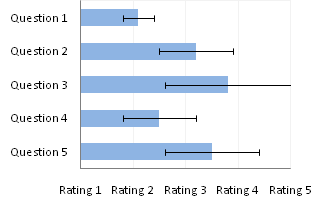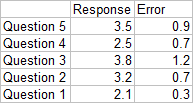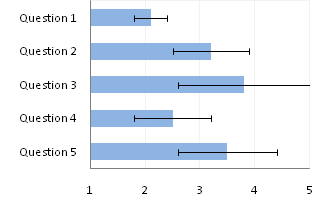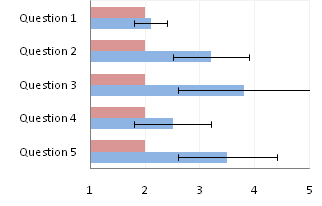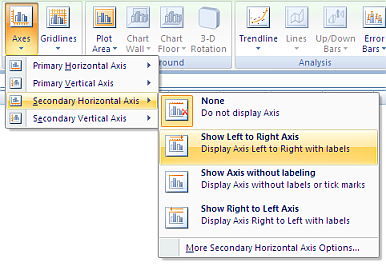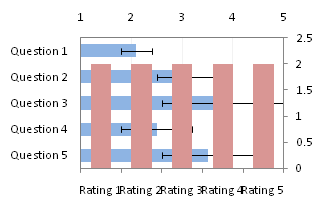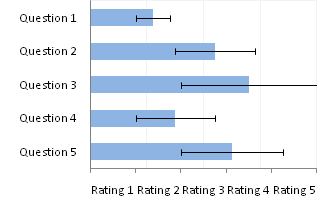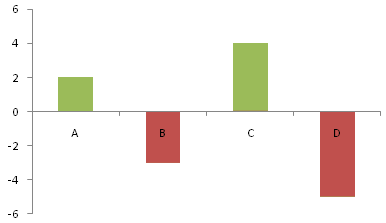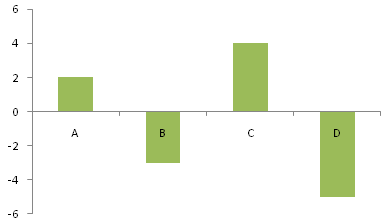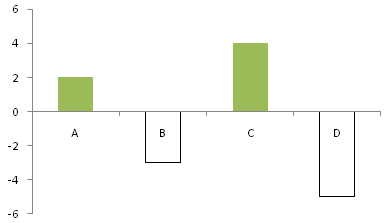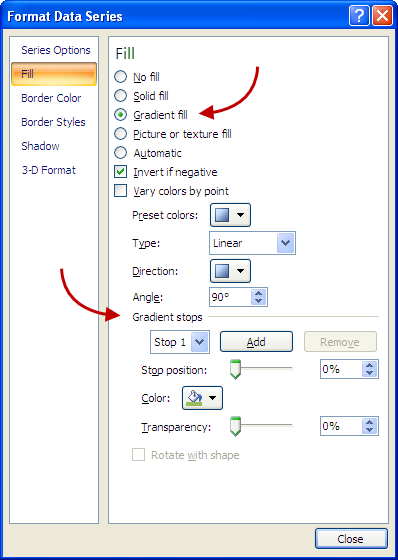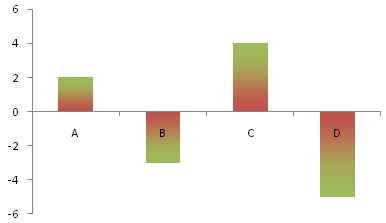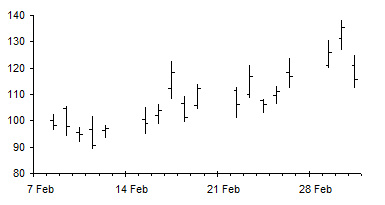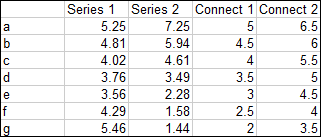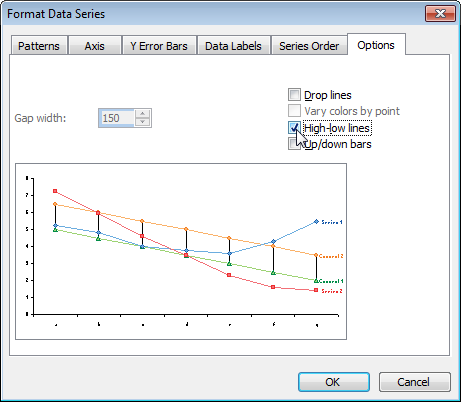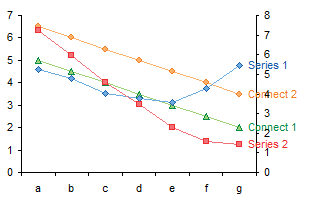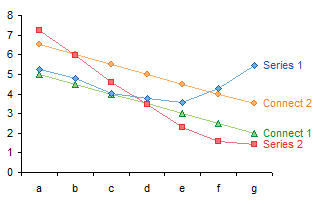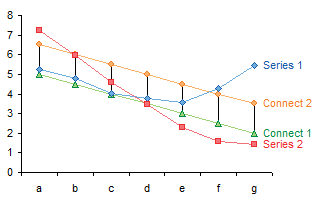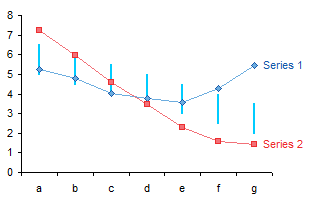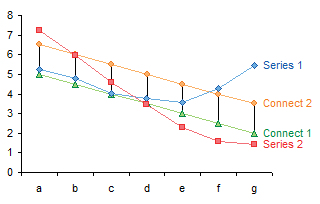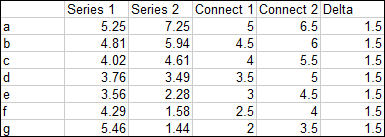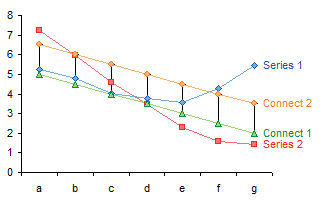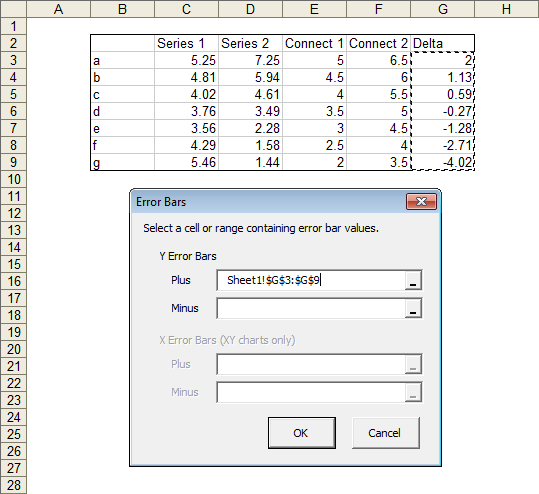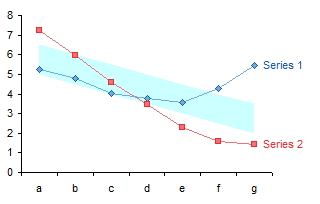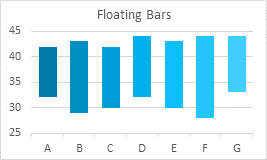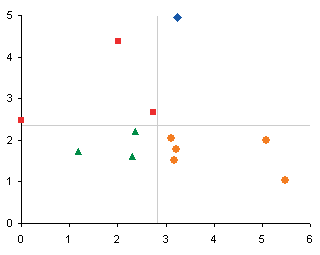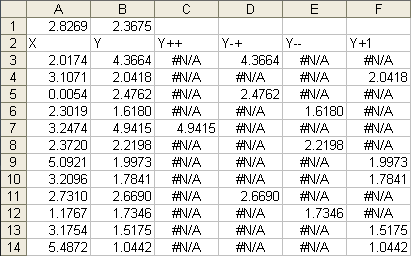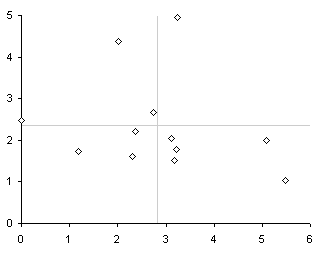When analyzing survey results, for example, there may be a numerical scale that has associated text labels. This may be a scale of 1 to 5 where 1 means “Completely Dissatisfied” and 5 means “Completely Satisfied”, with other labels in between. The data can be plotted by value, but it’s not obvious how to place the text labels on the chart in place of the numerical labels on the vertical axis.
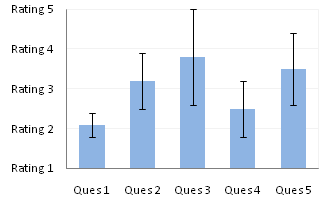
There are several ways to accomplish this task. In this tutorial I’ll show how to use a combination bar-column chart, in which the columns show the survey results and the bars provide the text labels for the horizontal axis. The steps are essentially the same in Excel 2007 and in Excel 2003. I’ll show the charts from Excel 2007, and the different dialogs for both where applicable.
Let’s assume the following dummy survey results.

Plot the responses for each question (the first two columns of the data) in a clustered column chart, and use the Error column as custom error bar values.
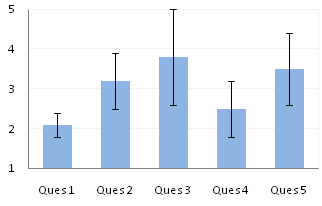
So far so good. Note that I’ve violated the first rule of column chart value axis scales, which is that The Axis Scale Must Include Zero. However, the minimum possible score here is 1, and we’ll be using text labels. In our chart, fixing the scale at 1 to 5 makes sense.
Here is the data for the text labels. Rating 1 may stand for “Totally Lame” and Rating 5 for “Totally Awesome”. I chose the Dummy values of 2 just so the data would show up in the chart.
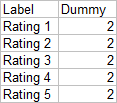
Copy this table above, select the chart, and use Paste Special to add the data to the chart using the settings below (the Excel 2007 dialog is very much like this Excel 2003 dialog).
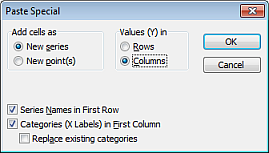
We now have two sets of columns in the chart.

Right click on the new series, choose “Change Chart Type” (“Chart Type” in 2003), and select the clustered bar style.
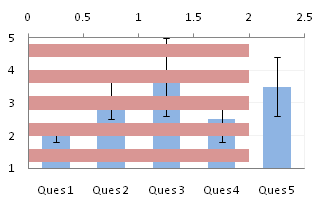
There are no Rating labels because there is no secondary vertical axis, so we have to add this axis by hand. On the Excel 2007 Chart Tools > Layout tab, click Axes, then Secondary Horizontal Axis, then Show Left to Right Axis.
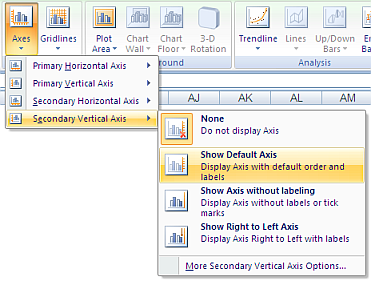
In Excel 2003 go to the Chart menu, choose Chart Options, and check the Category (X) Axis checkmark.
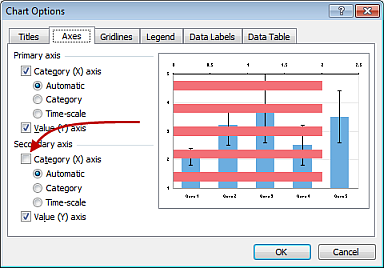
Now the chart has four axes.
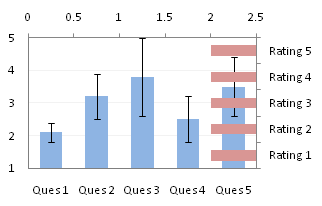
We want the Rating labels at the left side of the chart, and we’ll place the numerical axis at the right before we hide it. In turn, select the bottom and top vertical axes.
In the Excel 2007 Format Axis dialog, the bottom axis will be set so the vertical axis crosses at the automatic setting, and the top axis so the vertical axis crosses at the maximum category. Switch the settings of the top and bottom axes.
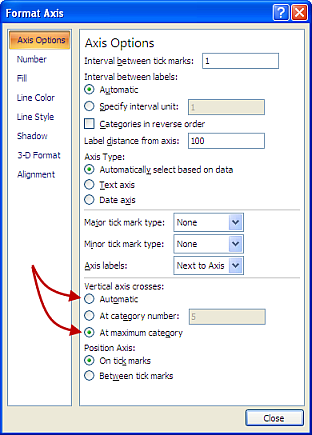
In the Excel 2003 Format Axis dialog, the maximum category checkbox checked for the top axis and unchecked for the bottom axis. Change the setting for the top and bottom axes.
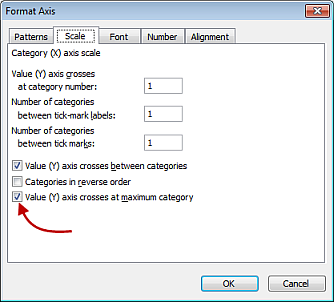
Now we have the axes where we want them.
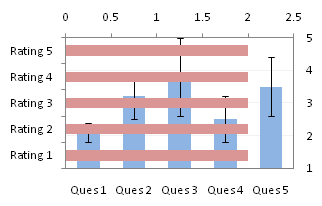
Hide the dummy series by setting its fill color to no fill.

Hide the top and right axes by selecting “None” for axis tick marks and tick labels, and “No Line” for the axis line itself.

In Excel 2007 (not in Excel 2003) the Rating labels may have been squished. Select the plot area, and drag its left edge inwards to make room for the labels.

The Rating labels are still not properly aligned, but this is easy to fix.
Format the vertical axis, and change the Position Axis setting of the horizontal axis from “Between Tick Marks” to “On Tick Marks”.

In the Excel 2003 Format Axis dialog, uncheck the “Value Axis Crosses Between Categories” checkbox.

Finally we have our chart with text labels along the survey response (vertical) axis.

See Text Labels on a Horizontal Bar Chart in Excel to see how to get the text labels onto the horizontal axis of a bar chart.
